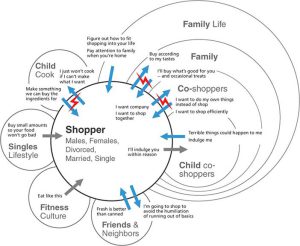I don’t know if you can say it or not, but my mission in this series of articles is to provide basic explanations about the rudimentary principles of astrology. This is my fourth Astrological Choices article that has already introduced the tropical or sidereal system, the heliocentric or geocentric perspective and the types of charts available. For this article, we will look at the tropical system of equal and unequal houses. I am not a sidereal astrologer, so trust someone who is an expert in the sidereal system for an explanation of the sidereal house designs.
The exterior of a typical astrology wheel shows the zodiac positions for a single date at a specific moment in time, at a specific longitude or latitude. If any of those four elements, date, time, place by longitude and latitude are changed in any way, the positions of the zodiac around the wheel itself will change. Two objects cannot occupy the same space at the same time, so an exact duplication of the charts is not possible unless a team of doctors does something amazing, and that would present a puzzle to astrologers the world over. The universe emphasizes individuality and this specificity of birth based on the four given elements allows one to map the individuality that the universe offers. Within our solar system it takes just under 26,000 years for a pattern to appear to repeat itself exactly. By that time we will have moved so far in the galactic spin that no real duplication is remotely possible. Individuality is the norm; only humanity works hard to develop conformity out of individuality.
There are two general types of tropical house systems, equal and unequal. The equal house system divides the 360 degree circle into 12 equal compartments of 30 degrees each. I don’t know your life experience, but mine is that life is certainly not equal, just look around you at the variety of possibilities and rampant inequality. While I can see value in any house system (they all could have a specific but perhaps unknown purpose), I don’t practice the equal houses method. One of the best personal reads I’ve gotten was from an overlay of equals and Placidus, I don’t rule out the equal system value, but it’s my choice to read the unequal.
It is important that you understand the difference between the Midheaven (Midheaven – MC) and the Zenith, as well as the Immum Coeli (IC) and the Nadir, which are different in measurement and application but are often confused with each other. this we will assume an exact Ascendant, say 29 Gemini. If I look up at 29 Pisces, that’s Zenith. If I look down at my feet at 29 Virgo which is Nadir, each at exact 90 degrees to the Ascendant. The opposition to the Ascendant is the Descendant in all house systems, in this case 29 Sagittarius. All the houses would read 29 degrees beginning with the Ascendant moving counter-clockwise around the wheel in zodiacal sequence. This is a graph of equal houses. You can choose to “float” the traditional Midheaven if you know it falls naturally in the house, or you can choose to ignore it. Personally, I can’t imagine life without a Midheaven!
The Earth rotates on its axis as it orbits the Sun, a dual movement that is at stake every moment of every day. This orbital path is called the ecliptic (the path in which eclipses occur) and it travels through the middle of the 12 zodiac constellations that we use astronomically and astrologically. The rotation of the Earth on its axis is No in a 90 degree relationship to its orbit, in contrast, the Earth is tilted approximately 23 ½ degrees with respect to the path of its orbit. This tilted rotation causes the Earth to rotate in and out of that exact 90 degree relationship to the center of the zodiac, distorting the way the zodiac is experienced here on Earth. The reality of the situation is the natural distortion that is reflected in the uneven distribution of space for houses. The Midheaven may or may not be at a 90 degree angle to the Ascendant. Mine is almost a trine (120 degrees).
In the tropical tradition the IC is the exact opposition to the MC including sign, degree and minute. The Midheaven represents the highest point at which a planet can ascend before beginning to descend toward the western horizon, called a setting. The CI represents the lowest point a planet can fall to before it begins to rise toward the eastern horizon or rise. This distortion produces an unusual and unique distribution of the degrees of the zodiac around the wheel of the chart which is reflected in the unequal house systems. Technically, dividing that distortion by space or time would come next, but that will have to wait for another article, as it requires more space than I have available. This article is only meant to help you understand equal and unequal houses.
Date, time and place are the three essential ingredients for a unique birth chart. The date is easy, the place is given by longitude and latitude; time is defined by the time standard in play at the time and place of birth. The Ascendant is set for the time of birth and intersects a specific point of the zodiac on the rising (left) side of the wheel, the rising sign. That point may be empty or occupied by a planet. Emptiness of a body has no particular meaning that I can determine; it essentially allows that point of the zodiac to operate as the “ruling” or dominant energy in that person’s life. When I mention the degree of the zodiac as dominant, it is the “ruling” planet of that degree of the zodiac that assumes dominance. If there is a physical planetary body present in that degree, the ruler of the zodiacal degree and the planet in question “co-rules” or are dominant energies in that person’s life. Is there more than one planet in that ascending zodiacal degree? Now the chart gets really interesting as the dominant qualities are more or less vital to the top dog position.
On my own wheel, the first house contains only 19 degrees, the second house only 20 degrees, the third house only 24 degrees, or about 63 degrees for that first quadrant. That’s exact. The closer you are to the equator, the more equal the houses will be. The further north or south you go from the equator, the less equal the houses are. This variation is what causes the interceptions in the houses. Near the equator there is little to no chance of interception. As you move north or south from the equator toward a birthplace, the distortion of houses increases and the probability of interception also increases. As you move towards the latitudes of, for example, Northern Europe, the British Isles, the northern part of EurAsia, etc. multiple interceptions are possible. The same is true of the southern hemisphere, although the population density decreases as you get closer to Antarctica.
The closer you get to the more densely populated northern polar countries, the Midheaven and Ascendant may be on top of each other. This is why advocates of equal houses show the inappropriateness of unequal houses. On the contrary, I think this proves the validity of the unequal housing system. As we travel north (or south) towards the polar regions, life becomes more difficult and hostile in nature. Since the Ascendant represents our physical selves and the Midheaven represents our goals in life, I believe that having them close to the conjunction would translate into personal survival as the goal of existence. That close proximity of the Ascendant and Midheaven would crush the 11th and 12th houses in that physical survival mode.
Since all the intercepted houses are an axis pair, the same situation would be true if the CI were to approach the Descendant with the 5th and 6th houses squeezed into that tight grouping. It is not my intention in this article to define intercepted houses, but it is important to your understanding of equal and unequal houses that intercepts occur naturally but only in uneven graphs.
The same houses are easier to build. Unequal houses require math skills or a good computer program. The same houses are more generic in quality but quite effective if you are doing quick short readings such as a fundraiser, psychic fair, radio or TV work. The pairing of equals with unequals as mentioned above was an extraordinary read for me. Each astrologer chooses what works best individually, but that is not a judgment on a system, it is a personal preference. Each has value, each has a place in your skill set, but you will choose one as your primary.







